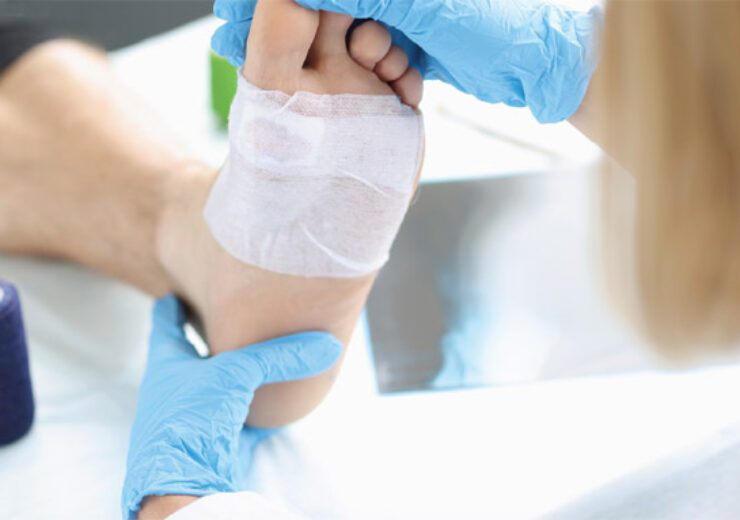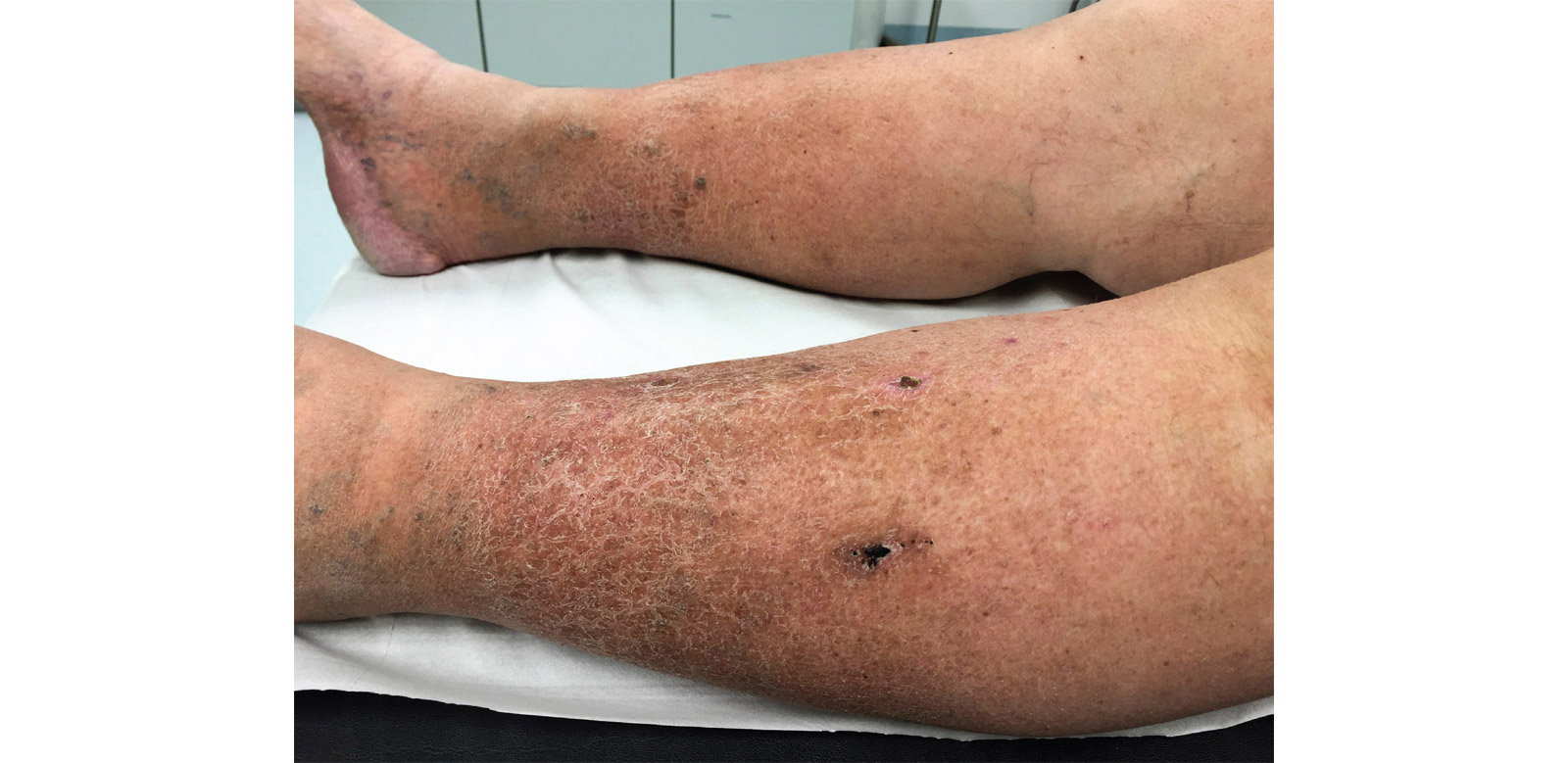Due to the high prevalence of diabetes, much of the academic literature on wound care is centred around how it affects the pathogenesis of chronic wounds and how healthcare professionals should go about treating them. But diabetes is one of many reasons the human body might struggle to heal from damage to one or more layers of the skin. Sarah Harris speaks to Naseer Ahmad, vascular surgeon and clinic director of the Manchester Amputation Reduction Strategy and Chandan Sen, associate vice-president of military & applied research at Indiana University’s School of Medicine, to explore the comorbid conditions that prevent wounds from healing, and the strain this puts on healthcare systems.

Image: megafl opp/Shutterstock.com
Wound care may seem like one of the simpler tasks in the medical field, given that the moment the skin is injured, the body naturally begins the processes that allow it to heal – but that couldn’t be further from the truth. In reality, the burden of treating wounds in the UK alone, to say nothing of the rest of the world, is huge.
A 2018 report published by the UK Government found that there are 2.2 million people with chronic wounds – those that don’t heal naturally for various reasons – the management of which costs the NHS over £5bn per year. What’s more, the number of wounds seen in the clinic is on the rise. A retrospective cohort analysis of patient records from The Health Improvement Network (THIN) database, found that there had been a 71% increase in the annual prevalence of wounds in the UK between 2012–2013 and 2017–2018.
Treatment and prevention
While it’s a well-known fact that wounds can take a while to heal or often reoccur in patients with diabetes, there are several other conditions that can also have an impact on wound healing. In these cases, it’s just as important to treat the underlying conditions that contributed towards the worsening of the wound than it is to treat the wound itself. “Any condition that is associated with immunosuppression and therefore compromises the ability to fight infection contributes towards wound chronicity can cause chronic wounds,” says Dr Chandan Sen, associate vice-president of military & applied research at Indiana University’s School of Medicine. This includes autoimmune diseases such as peripheral arterial disease, rheumatoid arthritis, cardiopulmonary and oxygen transport conditions, as well as dementia and renal failure. “Patients who are on immunosuppressing drugs are also more prone to having a wound infection that could be hostile,” Sen adds.
In general, there is no simple way to treat any and all chronic wounds of various types. “Typically, chronic wounds are debrided, meaning the edge of the chronic wounds undergo a sharp incision so that the dead tissues at the edge are removed, and this can be viewed as a chronic wound being converted into an acute wound,” says Sen, who in his role as executive director of the Comprehensive Wound Care Center at Indiana University Health Methodist Hospital, regularly treats patients with complex wounds. “Once that is done, then they’re managed by making sure that infection does not prevail. Every chronic wound is different, and some are really heavily infected, whilst others are less so.”
The reason behind wounds becoming infected is the proliferation of bacteria on their surface. “In chronic wounds, we have what is known as biofilm infections,” explains Sen. “These are microbial aggregates, and, in some infections, they have a very specific pathogenic process which is very hostile and complicates the healing of wounds and contributes towards wound chronicity.”

In practice, the biofilm prevents epithelial cells from migrating upwards and repairing the wounded area, as well as hindering the granulation process of forming new connective tissue and blood vessels. The bacteria also cause a low-grade inflammatory response that interferes with wound healing. But to make matters worse, even with patients that do reach a positive wound healing outcome with appropriate treatment, the repaired skin can be less effective as a barrier. “Currently, wound healing is defined as the covering of the wound, followed by no discharge for two weeks,” says Sen. “But what this definition does not consider is that the skin is the largest organ of the body and the primary job of the skin is barrier function, meaning water is reserved within the body so that allergens, pathogens and so on are not allowed to enter the body. It has been seen that in many cases, a wound will close but the repaired skin will be faulty, so it would not have barrier function.”
“Any condition that is associated with immunosuppression and therefore compromises the ability to fight infection contributes towards wound chronicity can cause chronic wounds.”
Chandan Sen, associate vice-president of military & applied research at Indiana University’s School of Medicine
Sen points to recent studies that show if a wound closes in such a faulty manner, meaning it is covered by skin that is not functional, then in those cases the skin will be easier to reinjure. “So, the concept of functional wound closure is not enough to just close the wound,” he adds. “It’s critically important to close the wound with skin that has intact barrier function.”
The cost of wound care
The 2018 UK Government report found that 87% of patients with chronic wounds are cared for in the community, by specialist district nurses and a network of tissue viability nurses. But Naseer Ahmad, vascular surgeon and clinic director of the Manchester Amputation Reduction Strategy (MARS), believes the healthcare system has improvements to make. “The system and national guidance tell us to concentrate mainly on diabetic foot ulcers, but non-diabetic foot and leg ulcers in particular are big problems that haven’t had as much attention, meaning the services have been left behind and are not as developed or as invested in as diabetic wound care.” The strategy he wants to see implemented across the country is “a whole systems approach to healthcare”. “What I mean by whole systems is public health, community hospitals, digital and finance, working together on clinical pathways so that we have fuss-free referrals across the entire pathway,” says Ahmad.
“A unique opportunity that integrated care offers is getting everybody together in the same room and joining together all the points that affect the patients care. We’ve been able to demonstrate that this works by reducing amputations and we’ve been able to care for everybody, without reducing the care or being detrimental to diabetic wound care,” He points to the MARS programme that he’s part of as evidence of effective collaboration. “We’ve noticed over the last six years, between 2016–2017 and 2021–2022, there’s been a 21% reduction in lower limb amputation and in another pilot study, we’ve reduced amputation by 42%,” he says.
In 2021, the topic of rising chronic wounds was discussed in parliament, with the government advising that, “an increase in wounds in younger patients is likely to be related to an increase in the prevalence of comorbidities in a younger population, as chronic wounds are usually due to comorbidities that affect wound healing, such as diabetes, arterial disease and venous disease.” While the awareness surrounding wound care in diabetic patients remains promising, the same cannot be said for other comorbid conditions.
Research and training in these areas is necessary to ensure preventative measures can be implemented. Currently in the UK, wound management is predominantly a nurse-led discipline, the complex nature of chronic wounds and the need for tissue viability and other specialist nurses, as well as the cost of resources such as dressing and bandages, means the overall cost of chronic wound care is significant. While the NHS has aimed to address this issue by initiating The National Wound Care Strategy Programme (NWCSP), an initiative that aims to address the issue of sub-optimal wound care by developing recommendations which can enhance the way in which we prevent, assess and treat wounds and minimise the potential and burden of wounds for patients, it is crucial that this issue continues to be addressed by both healthcare services and the government.
The NHS has also identified that this is an area that requires improvement in their long-term plan and believe that the recent shift to integrated care systems will bring together primary and specialist care services to reduce the burden of wound care. However, the true impact of these initiatives in reducing the prevalence of chronic wound cases will only be made clear with time.
NHS cost of patient management
The total annual NHS cost of managing 3.8 million patients with a wound was estimated to be £8.3bn (95% CI £7.9 to £8.5bn). The use of 100 bootstrapped samples indicated a 5% margin of error around the costs. When the bootstrapping was repeated using 1,000 subsets of cost data, the margin of error decreased to 1% (95% CI £8.2 to £8.4bn). District/community nurse visits were the primary cost driver accounting for 29% of all costs and GP office visits were the secondary cost driver accounting for a further 18% of the total cost. Healthcare assistant visits accounted for 17% of the total cost, practice nurse visits for 7% and wound care products for a further 6%. Resource use associated with managing the unhealed wounds was substantially greater than that of managing the healed wounds.
Consequently, the annual cost of managing the 70% of wounds that healed was estimated to be £2.7bn compared with £5.6bn for the 30% of wounds that did not heal within the study year. In addition, within the study period, the cost per healed wound ranged from £358 to £4,684 per patient and that of an unhealed wound ranged from £831 to £7,886 per patient. 81% of the total annual NHS cost was incurred in the community and the remainder in secondary care. However, the distribution of costs varied according to wound type, with 68% and 85% of the total annual NHS cost of managing acute and chronic wounds, respectively, being incurred in the community and the remainder in secondary care.
